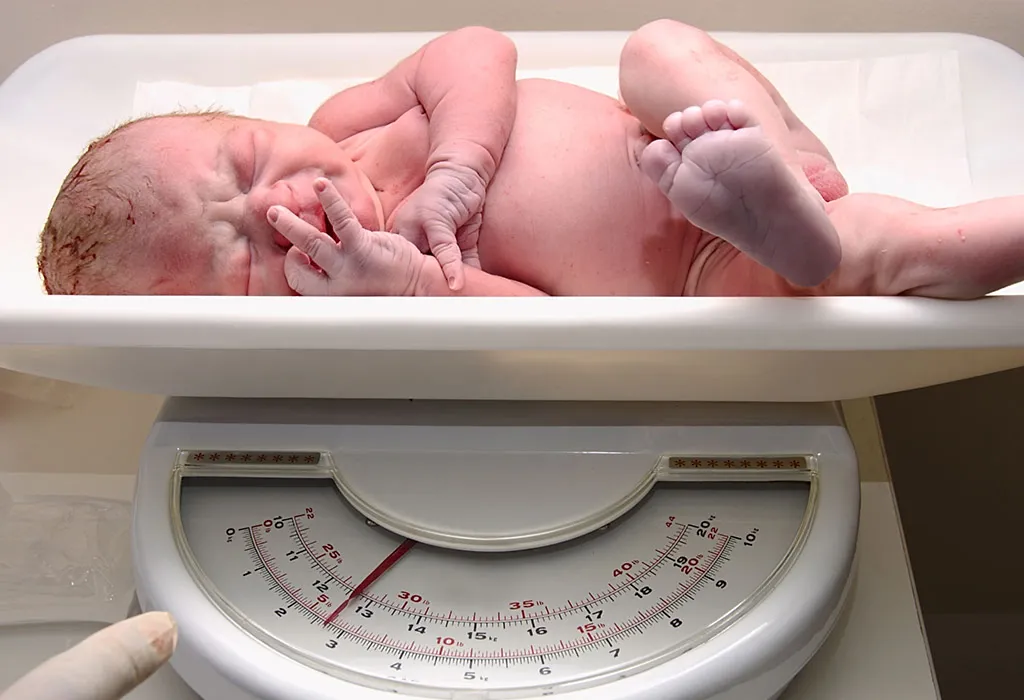Baby Weight at 36 Weeks in Womb Percentile


At FirstCry Parenting, our aim is to give you the most elevant, accurate and up to date information.
Every article that we publish, confirms to stringent guidelines & involves several levels of reviews, both from our Editorial team & Experts. We welcome your suggestions in making this platform more useful for all our users. Write in to us at parenting.care@firstcry.com

- What Causes Child Birth at 36 Weeks?
- Development of a Baby Born at 36 Weeks
- Complications Associated With Babies Born at 36 Weeks
- How to Care for a Premature Baby Born at 36 Weeks?
- What is the Survival Rate of Babies Born at 36 Weeks?
Last Updated on
Normally, a full-term baby remains in the womb for nine months. And, for quite a while, even babies born at 36 weeks were treated just like the full-term babies. However, over time, experts realised that a baby needs at least 37 weeks, if not more, to develop fully and survive outside the womb. There were innumerable cases wherein babies were born at 36 weeks, but with complications. Most doctors also use tocolytic medications such as magnesium sulfate to suppress premature contractions and delay delivery by a few days. However, the delay might still not be full term. In this article, we shall talk about what could lead to childbirth at 36 weeks, and how it affects the baby. Read on to know about childbirth at 36 weeks of pregnancy.
What Causes Child Birth at 36 Weeks?
A number of reasons can cause childbirth at 36 weeks. Here are some of them:
- Bacterial infections in the mother could affect the membrane of the amniotic sac and start rupturing them. A vaginal infection leads to fluid discharge from the vagina and burning sensation while passing urine. Genital irritation is also a strong sign of such an infection. Other infections like gonorrhoea and chlamydia could also trigger premature delivery.
- The chances of a child being born prematurely are even higher in mothers who have had previous pregnancies that also ended in premature births.
- At times, the presence of certain health conditions of the baby or the mother-to-be might require early delivery. This is usually done at a higher risk of infant mortality if the pregnancy is allowed to continue as opposed to premature delivery. Also, unless and until there are emergency conditions, caesarean surgery is only done after 37 completed weeks.
- Existing medical conditions of the mother-to-be, such as those related to the heart, or diabetes, and blood pressure can lead to premature deliveries. In some cases, consecutive pregnancies with fewer intervals, and IVF can also lead to premature births.
- Sometimes, severe health conditions and an unhealthy living environment can trigger early delivery too. Poor lifestyle choices such as consuming alcohol, taking drugs, smoking, and stressful and troubled life, like working long hours, being a victim of domestic violence, etc. can also lead to preterm childbirth.
Development of a Baby Born at 36 Weeks
For a baby born at 36 weeks, the average weight is usually around 2.5 to 3 kgs, and the length is around 44 to 49 cms. The fine hair covering the baby's body while he was inside the womb is on its way out along with the amniotic fluid that keeps the baby safe in the womb. During this time, the chances of your baby having fully matured lungs are 50-50. Some babies are stillborn with immature lungs. The circulatory system and the immunity of your child are at a pretty good stage and can help the baby survive outside the womb. The digestive system is developed to some extent; however, it is yet to mature. The skull also is developed, but not yet fused.
Now you know the development of a baby at 36 weeks can help doctors gauge if the baby will survive or what is needed to help him survive. In the next section, we shall talk about the medical complications of babies born at 36 weeks.

Complications Associated With Babies Born at 36 Weeks
Some of the complications that preterm babies face are –
1. Regulating Body Temperature
Even at 36 weeks, your baby might not have the necessary amount of fats that are required to be burnt by the body in order to maintain an optimal temperature for growth. This can lead to him being cold, which in worse cases, can cause hypothermia as well. Constant temperature checkups and incubators might be required.
2. Feeding Problems
The reflex that triggers the actions to suck on the breast and swallow the milk is possibly weaker in premature babies than their full-term counterparts. This can result in the baby going to sleep even when he is hungry. The baby may also not be able to make a sound or suckling action when he wants to have milk. Latching onto the breast can be yet another problem since he won't be able to suck the nipple as strongly as he needs to. Expressing milk and feeding the baby with the help of a bottle might be necessary.
3. Breathing Issues
Since the lungs of a preterm baby are not developed completely, your little one could breathe erratically. Another possible breathing complication is the onset of apnea. This is primarily due to an underdeveloped brain that can cause the breathing process to stop for a while without receiving a trigger to continue breathing.
4. Risk of Infection
Babies usually have a weak immune system. Preterm babies are more susceptible to bacterial attack and illnesses because their bodies are not completely developed. Their low immunity is further compounded by the body's inability to maintain a certain temperature, making it easy for microbes to infect them. Preterm babies, thus, have a greater risk of infection.
5. Contracting Jaundice
Most premature babies contract jaundice due to their underdeveloped livers and weak liver function. Infrequent excretion of bilirubin results in its accumulation as the underdeveloped liver cannot filter it out. This leads to jaundice. The most common symptoms of jaundice are yellow skin and eyes.
6. Patent Ductus Arteriosus
Some preterm babies may also suffer from Patent Ductus Arteriosus, which is a congenital heart defect wherein the ductus arteriosus, a temporary blood vessel, does not close soon after the baby is born. The function of ductus arteriosus is to allow blood to bypass the non-functioning lungs of the foetus. After childbirth, the blood vessel closes and becomes what is scientifically identified as ligamentum arteriosum.

Premature babies thus need a lot of care after they are born. Let's take a look at how to care for babies born at 36 weeks.
How to Care for a Premature Baby Born at 36 Weeks?
Caring for a premature baby can be a little different from caring for a healthy, full-term baby. Here are some things you must bear in mind when caring for a preterm baby.
1. Skin-to-Skin Contact
Apart from all the medical procedures and measures you would take to ensure continued support for the health of your preterm baby, creating a strong bond between you and your baby is essential. Having as much skin-to-skin contact as possible lets your baby know that you are taking care of him. Your baby can sense your presence and will love the soothing warmth that your body provides him. This connection also helps the baby calm down and heal faster.
2. Breastfeeding
Once your doctor deems it fine to let your baby start feeding the usual way, you can start breastfeeding him. This also necessitates that you continue expressing your breast milk even when the baby is not having any initially. Breast milk will further boost your baby's immunity by providing him with necessary antibodies. If holding your baby and letting him suck on the breast is still a problem, you can choose to feed him using a bottle. Formula-based milk should be used only if you have difficulty producing breast milk.
What is the Survival Rate of Babies Born at 36 Weeks?
The survival rate of babies born at 36 weeks is pretty good and hovers around 98% to 99%.
Finally, being able to hold your newborn baby is a wonderful feeling, even if he is a little premature. Once the necessary care has been taken to ensure that your baby can breathe well, feed well, and can maintain his body temperature, you can bring him home. You will have to be vigilant when it comes to your preterm baby's health for a few more months because his body is not as developed as a full-term baby. Nonetheless, the happiness of bringing your child home will be incomparable!
References:
- WebMD
- Healthline
Baby Weight at 36 Weeks in Womb Percentile
Source: https://parenting.firstcry.com/articles/baby-born-at-36-weeks/
0 Response to "Baby Weight at 36 Weeks in Womb Percentile"
Post a Comment